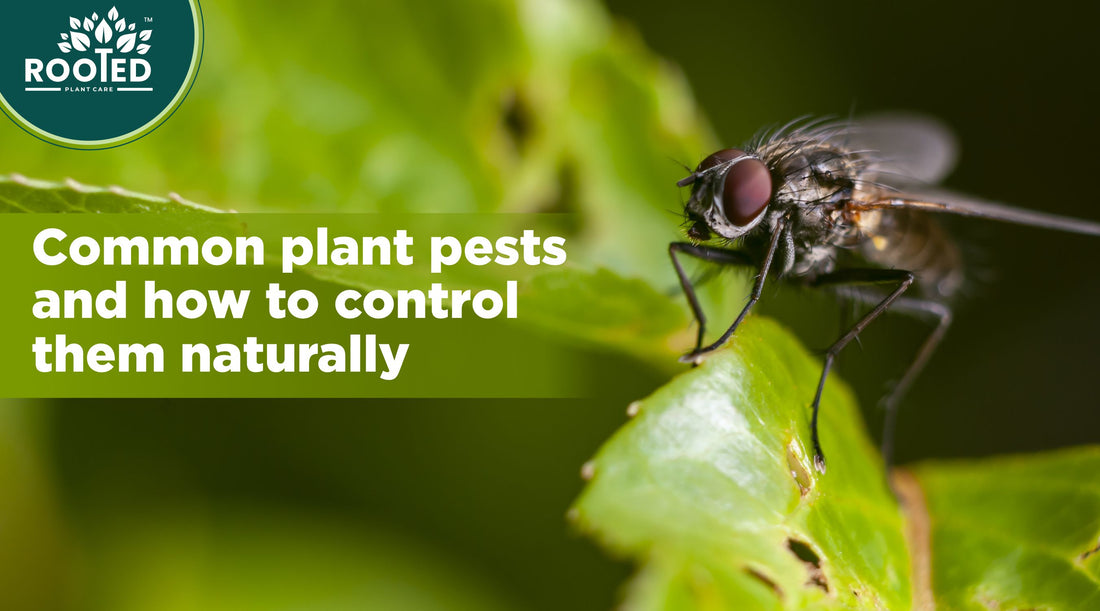The bambino plant, also known as the dwarf umbrella tree, is a popular houseplant known for its tropical look and easy care requirements. However, even this resilient plant can fall victim to some common indoor plant pests. Learning how to prevent and control infestations is crucial for keeping your bambino healthy and thriving. In this comprehensive guide, we will explore the most prevalent bambino plant pests and provide effective solutions for defending your plant.
What are the Most Common Bambino Plant Pests?
Several insects and bugs are attracted to the sap and foliage of the bambino plant. Be on the lookout for these 5 common pests:
Spider Mites
Tiny spider mites are one of the most destructive bambino plant pests. They spin fine webs and suck sap, causing speckled or yellowing leaves.
Mealybugs
These cottony white bugs cling to stems and leaves, extracting sap. Heavy infestations lead to poor growth.
Scale Insects
Armored bumps on stems and sticky residue are signs of scale insects feeding on your plant’s fluids.
Fungus Gnats
Excess moisture attracts fungus gnats. They look like small flies and their larvae live in the soil.
Thrips
Damaged growth and silver patches on leaves indicate thrips. They raspingly feed on plant cells.
Preventing Bambino Plant Pest Problems
Stopping pests before they strike is ideal. Here are some key prevention tips:
-
Quarantine new plants away from existing ones to check for hitchhiking bugs
-
Use sterile, high-quality potting mix rather than garden soil which may contain pests.
-
Keep leaves dust-free by wiping them down every 2 weeks. Dust attracts pests.
-
Allow the top inch of soil to dry out between waterings to deter fungus gnats.
-
Introduce beneficial insects like ladybugs or lacewings to prey on plant pests.
How to Control Bambino Plant Pest Infestations
If pests do gain a foothold, act quickly with these organic control methods:
Insecticidal Soap
Spray insecticidal soap directly on bugs like aphids, mealybugs, and mites. It kills soft-bodied insects through contact.
Neem Oil
This natural pesticide disrupts the life cycle of many insects. Use it to treat thrips, whiteflies, and scales.
Rubbing Alcohol
A solution of equal parts alcohol and water can wipe out spider mites. Apply with a spray bottle onto infested areas.
Sticky Traps
Traps catch adult fungus gnats. Use yellow ones and place near infested plants.
Predatory Insects
Release ladybugs, lacewings or predatory mites. They’ll hunt down pest colonies.
Remove Heavily Infested Parts
Prune off badly damaged leaves and stems to eliminate pest hideouts.
Top Bambino Plant Pest Prevention Tips
Vigilance and consistently applying these prevention methods will help safeguard your bambino plant:
-
Isolate new plants for a few weeks before introducing to check for pests.
-
Use sterile potting mix and clean pots to eliminate pest eggs and larvae.
-
Keep leaves clean by wiping every 2 weeks to remove dust buildup.
-
Allow the top inch of soil to dry out between waterings to prevent fungus gnats.
-
Maintain proper airflow and avoid overcrowding of plants to deter pests.
-
Apply neem oil or insecticidal soap monthly as preventative sprays.
-
Release beneficial predatory insects like ladybugs or lacewings.
-
Remove and dispose of heavily infested parts of plants.
FAQs About Bambino Plant Pests
What are signs my bambino plant has pests?
Look for spider webs, sticky residue, cottony masses, speckled leaves, poor growth, flies, and crawling insects.
How often should I check for pests?
Inspect your bambino weekly for early detection of any pests. Act quickly at first signs.
Are chemical pesticides safe for bambino plants?
Avoid chemical pesticides on household plants. Stick to gentle organic options like neem oil instead.
How can I prevent future bambino plant pest issues?
Follow the prevention tips above. Quarantine, sterilize tools, allow soil to dry out, and use natural methods.
Defend Your Bambino Plant Against Pests
While bambino plants are relatively pest-resistant, they can still fall prey to some common plant pests. Stay vigilant in monitoring for early signs of infestations. Isolate and treat pests quickly using gentle organic methods. And be sure to consistently apply prevention techniques to keep pests away in the future. With some diligence, you can maintain a thriving pest-free bambino plant.

The White and Sticky Brigade: Mealybugs and Whiteflies
Cottony clusters on your Bambino Miski are a dead giveaway: mealybugs have moved in. These pests create sticky messes and are known for their love of sap.
To eradicate these pests, grab a cotton swab soaked in rubbing alcohol and target each bug. For larger invasions, a thorough spray of insecticidal soap or neem oil is necessary. Ensure you reach into all the crevices where these pests might hide.
Whiteflies are less discreet, revealing themselves in fluttering clouds when disturbed. Theyre sap-suckers too, and theyre not shy about it.
Combat these pests with yellow sticky traps to catch the adults. For the larvae, a spray-down with insecticidal soap or neem oil will help. Consider reflective mulch as a deterrent; it confuses and repels these winged annoyances.
Bug Off: Preventative Strategies Specific to Pests
Vigilance is your plants personal bodyguard. Regular checks are non-negotiable; theyre like brushing your teeth but for your Bougainvillea Bambino Miski. Spotting pests early is the difference between a quick flick and a full-blown war.
